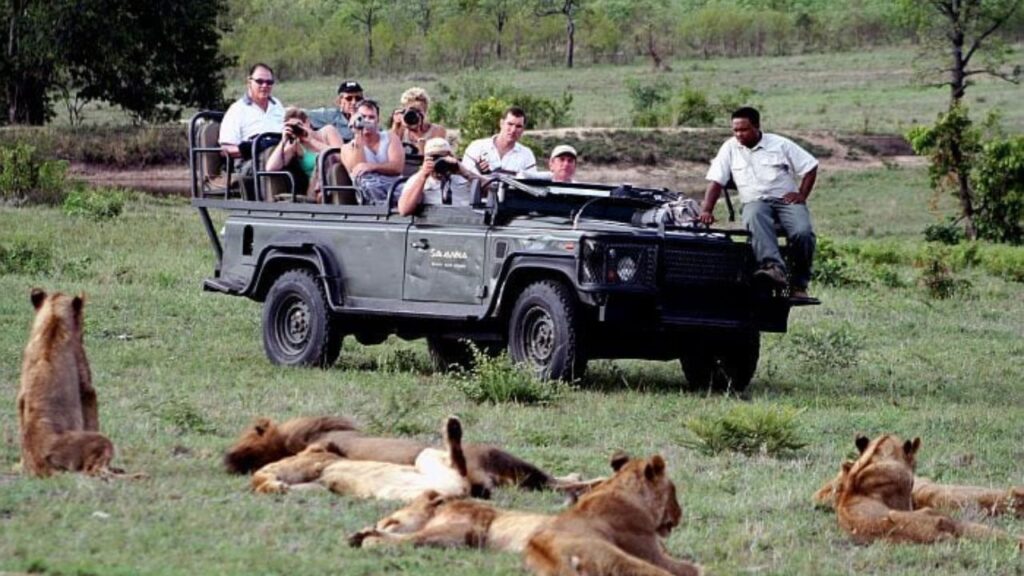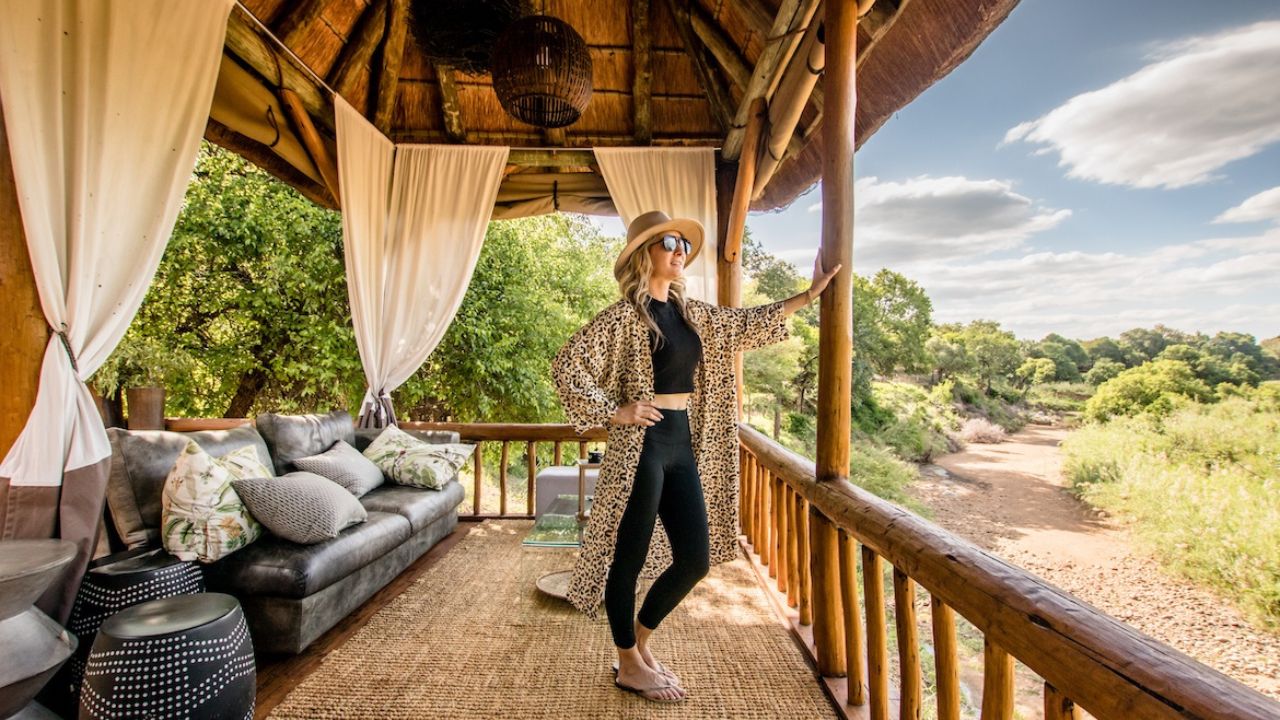Introduction
Embarking on a safari is an exciting adventure that combines wildlife viewing, nature exploration, and cultural discovery. One of the key aspects of preparing for a safari is choosing the right clothing—something that balances practicality, comfort, and style. Whether you’re headed to the African plains, wildlife reserves in India, or a jungle expedition in South America, your outfit choices can enhance your experience and keep you comfortable in diverse conditions.
In this comprehensive guide, we’ll explore everything you need to know about safari attire. We’ll cover essential clothing items, style tips, suitable fabrics, accessories, and outfit ideas tailored for different safari types and climates. Plus, get inspired with outfit visuals and packing tips to ensure you’re both chic and prepared.
Why Proper Safari Clothing Matters

Before diving into outfit ideas, it’s essential to understand why dressing appropriately is crucial:
- Protection from the Elements: Safaris often involve exposure to sun, dust, insects, and sometimes rain. Proper clothing shields you from these elements.
- Comfort & Mobility: You’ll be spending long hours in vehicles, walking, or exploring different terrains. Comfortable, functional clothing ensures you can move freely.
- Wildlife & Cultural Respect: Wearing neutral, non-flashy colors respects local customs and helps you blend into the environment, minimizing disturbance to wildlife.
- Weather Adaptability: Safaris can take place in hot, humid, or cooler conditions. Layering is key to adjusting to temperature changes.
Core Principles of Safari Clothing
- Neutral & Earth Tones:
Colors like khaki, beige, olive, tan, and brown help you blend into the environment and avoid startling animals. - Lightweight & Breathable Fabrics:
Materials like cotton, linen, and technical moisture-wicking fabrics keep you cool and dry. - Layering:
Layer clothes to adapt to temperature shifts—warm in the mornings/evenings, cooler during the heat of the day. - Sun & Insect Protection:
Long sleeves, pants, wide-brim hats, and insect-repellent clothing safeguard against sunburns and insect bites. - Comfort & Functionality:
Prioritize clothes with pockets, adjustable features, and durability.
Essential Clothing Items for a Safari
1. Shirts & Blouses
- Long-sleeve shirts:
Lightweight, breathable, UV-protective long-sleeve shirts are ideal to shield your arms from sun and insects. Roll-up sleeves for versatility. - Short-sleeve options:
Quick-drying, moisture-wicking t-shirts for hot days. Choose neutral colors. - Button-down shirts:
Classic safari style, functional with pockets, and easy to layer.
2. Pants & Trousers
- Convertible or zip-off pants:
Convert from long pants to shorts, providing flexibility. - Lightweight cargo pants:
Multiple pockets for storage, comfortable, and durable. - Chino-style trousers:
Stylish yet practical for evenings or park visits.
3. Outerwear & Jackets
- Fleece or insulated jackets:
For early morning game drives or cooler evenings. - Light rain jackets or ponchos:
Waterproof and lightweight, especially in rainy seasons. - Vest or utility jackets:
With multiple pockets for essentials.
4. Footwear
- Walking shoes or hiking boots:
Sturdy, comfortable, and ankle-supporting for walking safaris. - Closed-toe shoes:
Essential for protection against insects and terrain. - Sandals or flip-flops:
For relaxing at the lodge or camp.
5. Headwear & Accessories
- Wide-brim hat or cap:
Shields your face and neck from the sun. - Buffs or neck gaiters:
Versatile for sun protection, dust, or warmth. - Sunglasses:
UV-protective, polarized sunglasses reduce glare. - Insect-repellent clothing & treatments:
Consider clothing with built-in insect-repellent fabric or treat your clothes with permethrin.
6. Sleepwear & Lounge
- Light pajamas:
For evenings or camping.
Practical Considerations & Tips
- Pack light but versatile:
Choose pieces that mix and match, minimizing luggage. - Prioritize quick-drying fabrics:
For easy washing and comfort. - Don’t forget sun protection:
Sunscreen, lip balm, and after-sun lotion. - Bring a small daypack:
For essentials like water, camera, bug spray, and snacks. - Use insect-repellent sprays or lotions:
Especially in tropical or forested regions. - Avoid bright colors & busy patterns:
To avoid attracting unnecessary attention and disturbing wildlife.
Outfit Ideas for Different Types of Safaris
1. Classic African Safari (Big Game Viewing)
Color Palette:
Earth tones, khaki, olive, beige.
Outfit Example:
- Lightweight long-sleeve UV shirt
- Convertible cargo pants
- Wide-brim hat
- Durable hiking boots
- Sunglasses
- Light scarf or buff for dust
Additional Tips:
- Bring a lightweight jacket for early mornings
- Use a neutral-colored camera strap or bag
2. Jungle Safari (Rainforest Expeditions)
Color Palette:
Dark greens, browns, muted tones.
Outfit Example:
- Breathable, moisture-wicking long-sleeve shirt
- Quick-drying pants or shorts with insect-repellent treatment
- Waterproof jacket
- Closed-toe waterproof shoes or hiking boots
- Insect-repellent hat
Additional Tips:
- Pack waterproof gear and anti-mosquito sprays
3. Desert or Arid Safari (Namibia, Middle East)
Color Palette:
Light tans, sandy hues, whites.
Outfit Example:
- Loose-fitting linen shirt
- Light-colored trousers
- Wide-brim hat
- UV-protective sunglasses
- Lightweight scarf or bandana
- Breathable sandals or shoes
Additional Tips:
- Hydrate frequently, and protect your skin from sun
4. Birdwatching or Eco-Safari
Color Palette:
Muted, natural tones.
Outfit Example:
- Neutral-colored long-sleeve shirt with roll-up sleeves
- Lightweight cargo or khakis
- Hat with brim
- Binoculars and camera gear in a comfortable bag
5. Luxury or Lodge Safari
Color Palette:
Chic neutrals, pastels, or sophisticated patterns.
Outfit Example:
- Linen or silk blouse
- Tailored trousers or skirts
- Stylish sandals or loafers
- Light shawl or wrap for evenings
Additional Tips:
- Keep accessories minimal but elegant
Style Inspo & Outfit Visuals
- Casual Safari Chic:
Think neutral-toned cargo pants, fitted long-sleeve shirts, a wide-brim hat, and stylish hiking boots. Perfect for game drives and daytime adventures. - Elegant Evening Safari:
Lightweight dresses or linen shirts with accessories, paired with comfortable flats or sandals, suitable for lodge dinners. - Layered & Ready:
Combining a moisture-wicking base layer, a breathable shirt, a utility vest, and a light jacket ensures flexibility. - Accessorizing:
Use lightweight scarves, statement hats, or colorful buffs to add style and function.
Packing Checklist for a Safari Outfit
- Long-sleeve UV-protective shirts (2-3)
- Short-sleeve moisture-wicking shirts (2-3)
- Convertible or lightweight cargo pants (2 pairs)
- Shorts or skirts for lodge lounging
- Lightweight fleece or insulated jacket
- Waterproof jacket or poncho
- Wide-brim hat or cap
- Sunglasses (UV-protective)
- Comfortable hiking boots or walking shoes
- Sandals or flip-flops
- Insect-repellent clothing or treatments
- Lightweight scarves or buffs
- Sleepwear
- Socks and underwear
- Swimwear (if applicable)
- Accessories (watch, camera, binoculars)
Final Tips & Summary
- Prioritize comfort and practicality: Choose clothes that allow you to move freely, breathe, and protect you from the sun and insects.
- Stick to neutral colors: To blend into the environment and avoid disturbing wildlife.
- Layer up: Mornings and evenings can be chilly, while daytime can be hot.
- Think about versatility: Pack items that can be mixed and matched for different occasions.
- Respect local customs: Especially in cultural or community-based safaris.





